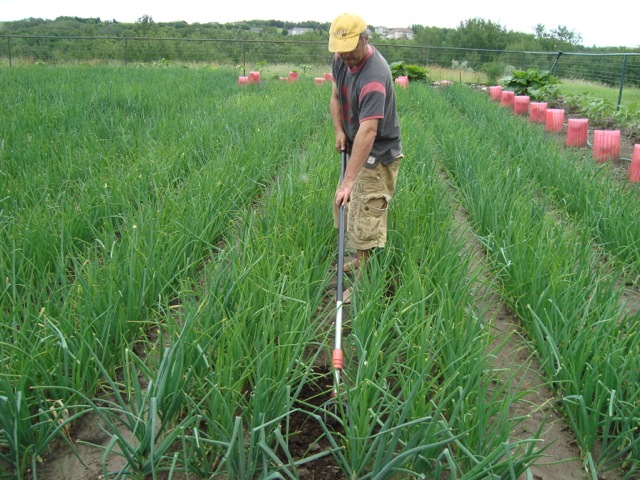Courtesy of Wally S., Wally’s Urban Market Garden, Saskatoon SK
There was a plot I had been farming for about five years, and now it’s gone. The owner sold her house that it was attached to, and she had no interest in accommodating me as part of the deal. If this were a traditional farming story, I’d be playing the tragic hero-farmer being kicked off his land.
That’s not my story. I can actually say “Good riddance.” It was a good plot. It was about a half hour’s drive north of my Saskatoon home base. It was 7,000 square feet, so 7 segments. I’ve grown my longer season crops there – onions, potatoes, squash, and I could count on it contributing $7K – $12K to my bottom line each year. But over the years, its negatives started outweighing the positives. Traffic on the drive there got crazier, and I obtained other plots in the opposite direction, so logistics were more burdensome.
Now a friend at market has about 6,000 sq. ft. he says I can use which is only a couple of miles from another one of my plots. So I can manage both in one day. To make up the loss of the 1,000 sq. ft. I can intensify production. So this story has a happy ending: I am losing a peri-urban site that was becoming tough to manage, and getting a new site that will be easier to integrate.
That’s the advantage to being a multi-locational SPIN farmer. You have more options to access land (in the US there are 40 million acres of lawn), and you are less likely to get stuck in a rut.
Goodbye plot. You served me well, but I won’t be crying in my beer over this breakup.
SPIN farmers have innovative strategies for accessing land. You can find out how they find and manage in the SPIN online support group. Free trial membership comes with the purchase of any SPIN guide.

